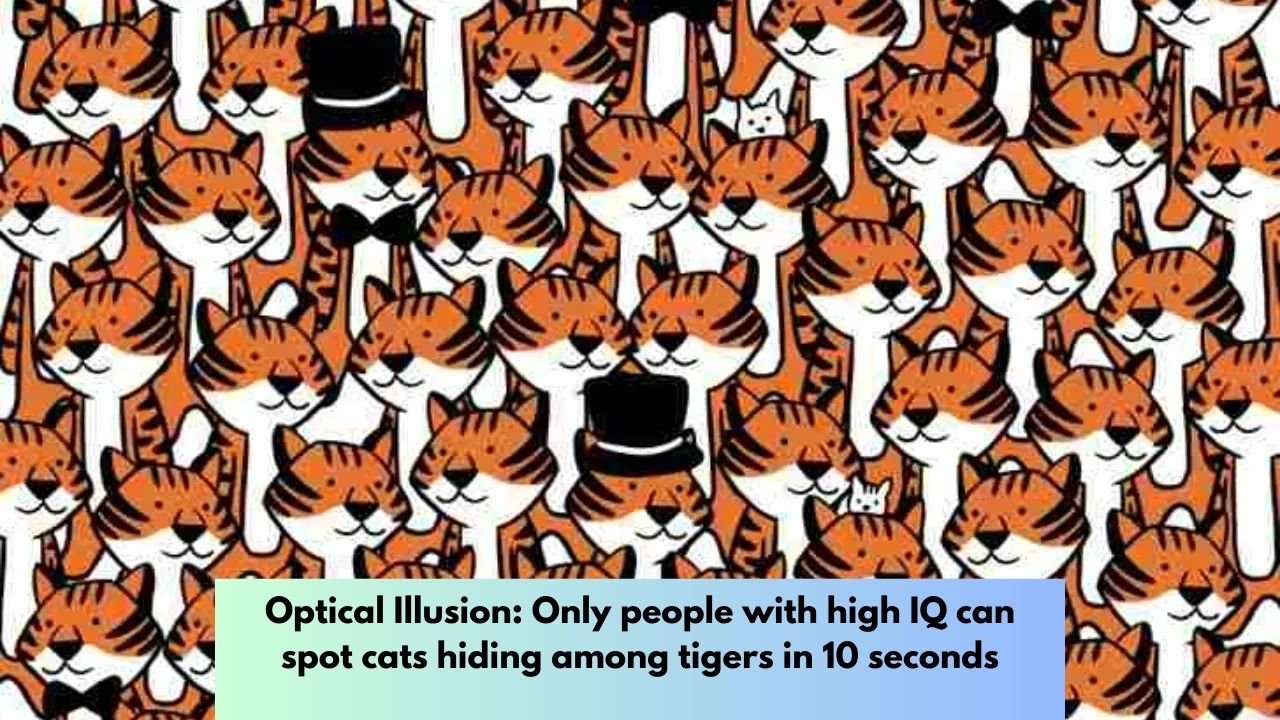The concept of an optical illusion where cats are hiding among tigers and only individuals with a high IQ can spot them within 10 seconds is a fascinating one. This illusion taps into the human brain’s ability to perceive patterns, shapes, and contrasts, while also challenging cognitive skills such as attention to detail and quick decision-making.
In this illusion, a visual image is presented, typically depicting a group of tigers in their natural habitat. However, interspersed among the tigers are smaller images of cats, camouflaged to blend seamlessly into the background. These cats are strategically positioned and may share similar colors or patterns with the tigers, making them difficult to detect at first glance.
The challenge posed by this optical illusion lies in the observer’s ability to differentiate between the larger, prominent figures (the tigers) and the smaller, hidden elements (the cats). Despite their size, the cats are intentionally designed to be inconspicuous, requiring keen observational skills to identify them amidst the larger scene.
Individuals with a high IQ may have an advantage in solving this puzzle due to their heightened cognitive abilities, including visual processing, pattern recognition, and attentional focus. They may be able to quickly scan the image, discerning subtle differences and anomalies that indicate the presence of the hidden cats.
Furthermore, individuals with a high IQ often possess strong problem-solving skills and mental agility, enabling them to devise effective strategies for tackling complex tasks in a short amount of time. In the case of this optical illusion, they may employ systematic approaches such as scanning specific areas of the image, focusing on color contrasts, or mentally isolating different elements to aid in their search for the hidden cats.
The time limit of 10 seconds adds an element of urgency and pressure, prompting participants to rely on their instincts and intuition rather than overthinking the task. It also serves to differentiate between those who can quickly identify the hidden cats and those who may require more time or assistance.
Overall, the optical illusion of cats hiding among tigers is a captivating and engaging test of visual perception and cognitive prowess. Whether one succeeds in spotting the hidden cats within the allotted time or not, the experience serves as a reminder of the fascinating complexities of the human mind and its remarkable capacity for problem-solving and exploration.
It is quite possible that the assertion that only individuals with a high IQ are capable of spotting cats hiding amid tigers in ten seconds is either a sort of clickbait or a social media challenge designed to engage users. There is no evidence from the scientific community to support the hypothesis that intelligence is directly proportional to one’s capacity to locate hidden items in photographic representations.
On the other hand, visual perception and the capacity to recognize patterns in a short amount of time might vary from person to person for a number of different reasons, such as the amount of experience, the level of attention to detail, and the cognitive capacities. There is a possibility that individuals who have a great sense of observation or who take pleasure in solving puzzles will find such tasks more fascinating; nevertheless, this does not necessarily indicate that they are more intelligent overall.
In the event that you come across such assertions, it is essential to approach them with a critical perspective and acknowledge that intelligence is a comprehensive attribute that cannot be adequately evaluated through the use of a single visual puzzle. Participating in and taking pleasure in such tasks can be a fun and engaging method to test your observational skills; however, it is vital to keep these challenges separate from any claims that it is possible to make about intellect.


